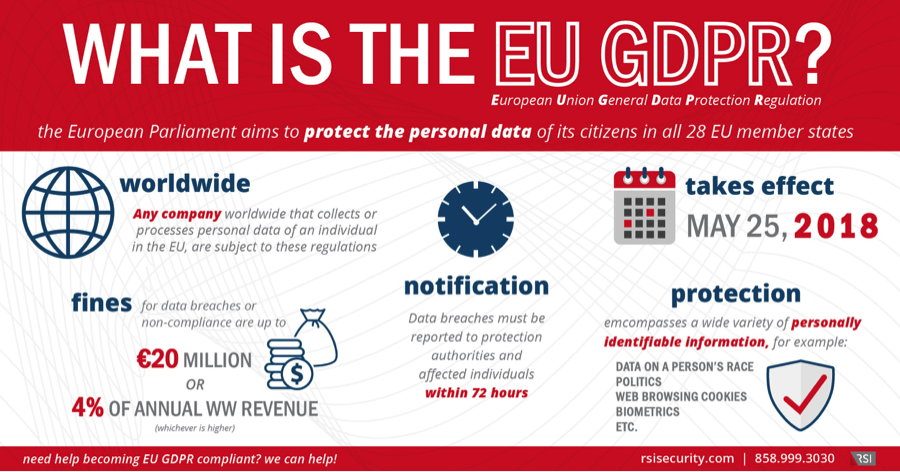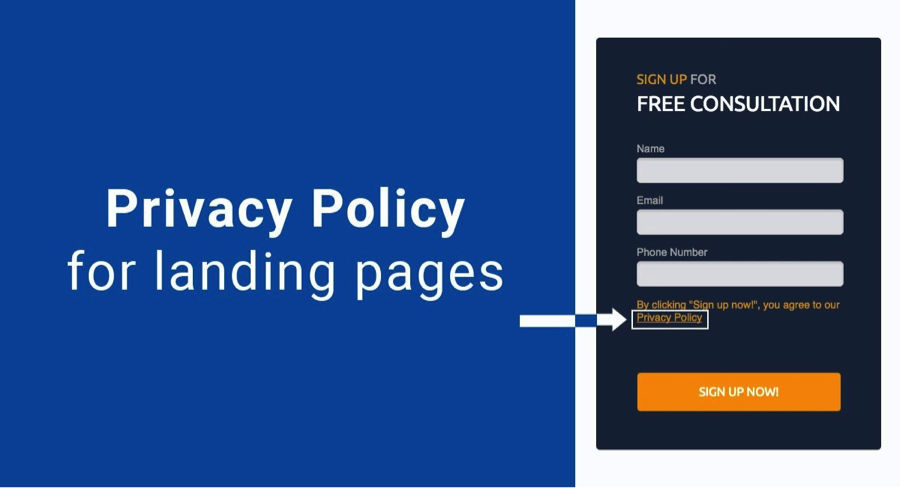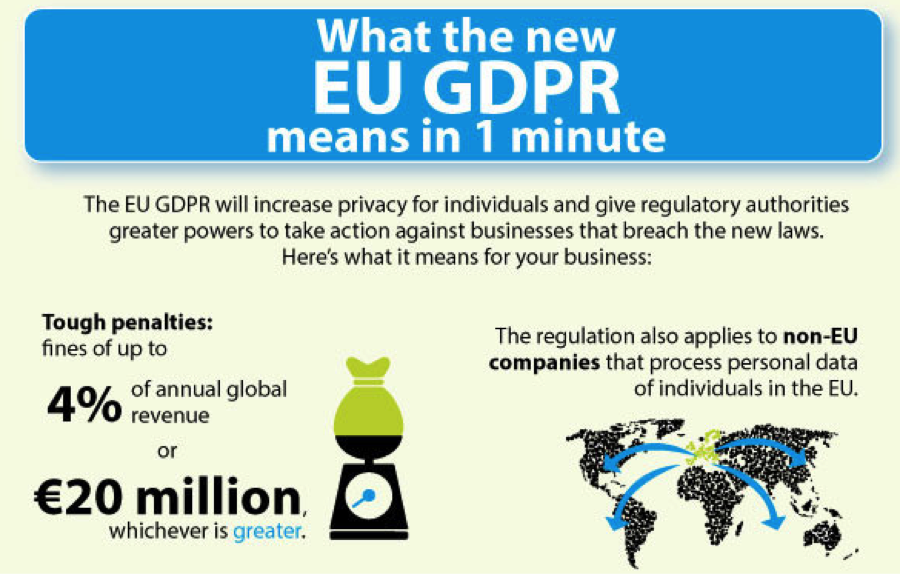Opt-in Landing Pages with GDPR
Since it came out applications on Facebook openly took user information without account holders knowing about it, new general data protection regulations, or GDPR, have come out from nearly all major Internet application and software providers, ranging from Google and Apple to Snapchat and Twitter. These GDPRs are designed to both clear up a potential issue with user data while providing the highest level of service possible. The general data protection regulation affects just about everything online, including business opt-in landing pages. Due to this, businesses need to understand how to ensure all landing pages are GDPR compliant. Here are several important tips, suggestions, and requirements all companies need to utilize when building and updating all opt-in landing pages.
Quick Links
About the GDPR
The GDPR lays out easier to understand rules with regards to what software companies and online marketers can do while collecting information. This includes tracking a site visitor and what the website can or cannot do with regards to a customer’s personal information (or, in this case, a potential customer on an opt-in landing page).
While created in the European Union, it is not just for citizens of the EU. Instead, the requirements are for any business with stored data assets within the EU. Due to this, it isn’t necessary for a website user to be located inside of Europe. Instead, it’s based on what assets the company has located in the EU.
Companies failing to comply with the new GDPR regulations may see fines of up to four percent annual global turnover (or up to 20 million euros). According to Engadget, while the initial updated GDPR came out specifically for the EU, large companies such as Facebook are expanding coverage worldwide. Due to this, it’s vital for a company to comply with the general data protection regulations.

(Source)
The Data Collection Process
The entire purpose of an opt-in landing page is to collect some kind of information (such as an email address). While the individual knows they are providing their email address, a company needs to explain exactly what will happen with the data. Even if the email is to just be stored on site for future newsletters, the company needs to inform the individual opting their supplied information will be stored.
The language used with regards to data storage and intended usage of the information needs to be clear and specific. This information needs to be visibly presented and a visitor to the opt-in landing page needs to indicate they have read the information (such as checking off a provided box on the form indicating they have read and agree with how the data is to be collected and used).

(Source)
Requesting Access to Data
Breakthrough Advertising heavily relies on data and the information obtained from both customers and potential customers. However, according to the GDPR, those who provide their information have the legal right to request access to all of their personal data.
Those who provide their data have always had this right, although not all knew about it. Additionally, businesses had a 40-day period to provide the requested information. Although no specifics have yet been put into place, the 40-day request period will likely drop in allotted response length. Due to this, a business needs to actively monitor all information and have easy access to it, in the event of a data request from a customer.
Whether a customer originally signed up for a product made available through an opt-in page or e-commerce product videos on a video platform, new regulations are now in place for what a business needs to do with regards to someone requesting removal from an opt-in email subscription.
Within the send email, a business needs to provide a recipient with the opportunity to request removal from the email list. When requesting removal from the email list, all customer data needs to be expunged from any and all data serves.
How the GDPR Affects an Opt-In Landing Page Appearance

(Source)
The physical appearance of a landing page will not change. The GDPR does not alter the visual look of a website or landing page. What may need to change in order to remain compliant with the GDPR is the fine print and how an interested visitor opts-in to the content.
Using a double opt-in landing page can help with this. The double opt-in landing page requires a potential subscriber to not only enter their email address but to check off requests asking whether or not they read and comply with the data agreement.
How This May Affect Landing Page Opt-In Success
According to Clever Touch: Intelligent Engagement, the newly revised opt-in language may impact the subscriber database size. When informed of exactly what a business intends to do with data, those prospective clients on the fence may decide against signing up in order to prevent their information from being stored on a third party data server. However, while the database size may drop, the quality will likely increase. As customers are informed of exactly how their information is to be stored, used and accessed, those who do comply and opt-in are clearly interested in the products or services offered by the company.
Additional Regulations To Come

(Source)
The GDPR requirements are currently EU specific. However, as the new changes went into effect in May, it’s likely not only additional regulations will come to Europe but North America as well. Due to this, it’s crucial for a business to stay up to date on all of the latest GDPR developments in the coming months. As Facebook has stated it will make its EU GDPR a global standard, other companies will likely follow a similar path. However, as Facebook announced these North American changes would eventually establish set U.S. or Canadian standards, it’s possible either some or all companies will establish unique North American GDPRs, or federal governments will step in and create new GDPR specifics.
In Conclusion
The new and upcoming GDPR requirements are designed to provide software and service subscribers with new levels of data protection. In general, the new changes shouldn’t have much of a visual impact on an opt-in landing page. The same product videos, images, and other e-commerce content may remain. However, the way data is collected and stored will change. Additionally, a company must inform subscribers as to what the attended usage of the information is, that it will be stored and it must provide access to stored information upon request. These updates will not drastically alter the way companies do business, and by remaining proactive with updates, a business will avoid any potentially extravagant fines levied by government oversight organizations.
 Mike Giannulis
Mike GiannulisWhat Is WooCommerce Product Slider and Why Your Store Needs It
Why Do Product Images Matter So Much in Online Stores? When someone visits an online store the…
0 Comments9 Minutes
How to Streamline Your Customers’ Shopping Experience?
The goal for any online store is to make shopping as smooth as possible. When visitors move…
0 Comments8 Minutes
Strengthening Brand-Customer Relationships Through Gamified Loyalty Programs
Creating lasting connections with customers has become increasingly vital as the marketplace grows…
0 Comments6 Minutes
How to Use SEO and SEA Together in Search Engine Marketing
In digital marketing, search engine marketing (SEM) plays a critical role in improving online…
0 Comments10 Minutes
Content Marketing Growth Hacks: Real Shortcuts to Drive Traffic
Are you still lagging in content marketing? Sticking to these old strategies seems…
0 Comments10 Minutes
How to Build a Strong Local Following Using Social Media Marketing
In the days of likes, shares, and stories, local businesses have a golden opportunity to create…
0 Comments9 Minutes
Why WooCommerce is the Best Choice for Your Online Store?
WooCommerce stands out as a top option for anyone looking to build an online store. This platform…
0 Comments8 Minutes
How to Use AI-Powered SEO Tools for WordPress eCommerce
SEO is a critical factor in the success of any e-commerce WordPress store. As competition…
0 Comments11 Minutes








Comments are closed.